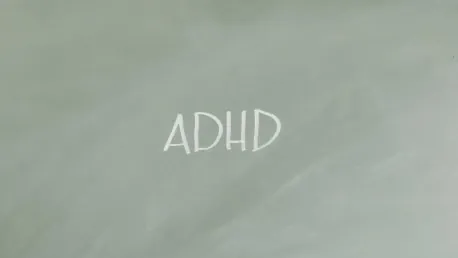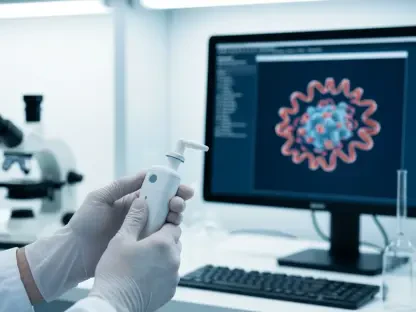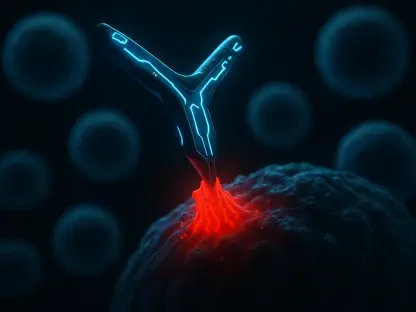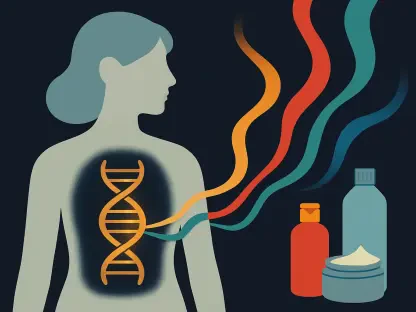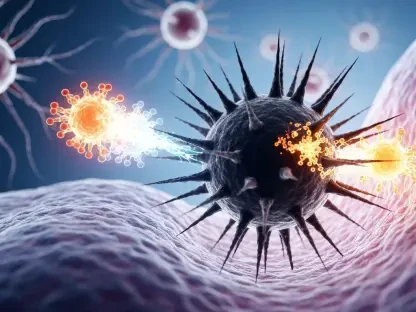Attention deficit-hyperactivity disorder (ADHD) is a prevalent neurodevelopmental disorder that significantly impacts daily functioning and development. Characterized by persistent patterns of hyperactivity, impulsivity, and inattention, ADHD affects about 5% of children aged 6–18 years and persists into adulthood for up to 75% of those initially diagnosed. Managing ADHD in adults is complex, often requiring a combination of pharmacological and non-pharmacological treatments. This article delves into the effectiveness and limitations of these treatments, with a particular focus on stimulant medications.
Understanding ADHD in Adults
Prevalence and Impact
ADHD is not just a childhood disorder; it continues to affect a significant portion of those diagnosed into their adult years. The persistence of ADHD symptoms into adulthood can lead to various challenges, including difficulties in maintaining employment, relationships, and overall quality of life. Additionally, ADHD in adults is often accompanied by other dysfunctions or disorders, further complicating treatment and management strategies. Studies show that adults with ADHD frequently face co-occurring conditions such as anxiety, depression, and substance use disorders, making the management of ADHD even more intricate. Effective treatment and comprehensive strategies are essential to address both primary symptoms and associated complications.
Long-term studies have indicated that untreated ADHD in adults can result in significant impairments across various life domains. For instance, adults with ADHD may experience higher rates of job turnover, lower job performance, and more frequent accidents or injuries. The impact on personal relationships can also be profound, affecting marital stability and parenting effectiveness. Moreover, the high prevalence of comorbidities can exacerbate the overall burden, necessitating a multifaceted treatment approach that goes beyond medications to include psychological and behavioral interventions. Overall, the far-reaching consequences of ADHD in adults underscore the need for effective and personalized treatment strategies.
Symptoms and Diagnosis
The core symptoms of ADHD—hyperactivity, impulsivity, and inattention—manifest differently in adults compared to children. Adults may experience restlessness rather than hyperactivity, and their impulsivity might lead to hasty decisions or problems with self-control. Accurate diagnosis is crucial for effective treatment, often involving self- and clinician-rated scales to assess symptom severity. Standard diagnostic tools and questionnaires, such as the Adult ADHD Self-Report Scale (ASRS) and the Conners’ Adult ADHD Rating Scales (CAARS), are commonly used to evaluate symptom presence and severity. These tools help clinicians gather comprehensive information about the individual’s behavioral patterns and functional impairments in various settings, such as at work or at home.
It is essential to differentiate ADHD symptoms from other psychiatric conditions that may present similarly, such as anxiety disorders, mood disorders, or personality disorders. A thorough clinical assessment, including a detailed history and collateral information from family members or close associates, is often necessary to establish an accurate diagnosis. The diagnosis process also involves ruling out other medical conditions or substance use that may mimic or exacerbate ADHD symptoms. Once a diagnosis is confirmed, personalized treatment plans can be developed, incorporating both pharmacological and non-pharmacological interventions based on the individual’s needs and preferences.
Pharmacological Treatments
Stimulant Medications
Stimulants, including methylphenidate and amphetamine-based medications, are commonly prescribed for ADHD. These medications have been shown to be highly effective in reducing core ADHD symptoms in adults. A study published in The Lancet Psychiatry highlights that stimulants are the only treatment with robust short-term efficacy and favorable acceptability. Stimulants work by increasing the availability of neurotransmitters such as dopamine and norepinephrine in the brain, which helps improve attention and reduce impulsivity and hyperactivity. Their rapid onset of action and positive impact on core symptoms make them a preferred choice for many clinicians treating adult ADHD.
Despite their efficacy, the use of stimulant medications is not without challenges. Some individuals may experience side effects such as increased heart rate, anxiety, insomnia, or appetite suppression. Additionally, concerns about the potential for misuse or dependency necessitate careful monitoring and judicious prescribing practices. Clinicians must balance the benefits of symptom control with the risks associated with stimulants, tailoring treatment plans to minimize adverse effects and optimize therapeutic outcomes. Regular follow-ups and adjustments in medication type or dosage are often required to maintain efficacy and tolerability over time. Overall, while stimulants remain a cornerstone of ADHD treatment, their use must be carefully managed to ensure safety and effectiveness.
Atomoxetine and Other Medications
Atomoxetine, a non-stimulant medication, also demonstrates efficacy in managing ADHD symptoms. However, its acceptability is lower compared to stimulants, with higher rates of discontinuation due to adverse events. Atomoxetine functions as a selective norepinephrine reuptake inhibitor (NRI), and its mechanism of action differs from that of stimulant medications. It is often considered for individuals who do not respond well to stimulants or those who may have contraindications for stimulant use. Despite its utility, side effects such as gastrointestinal issues, sleep disturbances, and increased blood pressure can impact adherence to atomoxetine treatment.
Other medications such as viloxazine, modafinil, guanfacine, clonidine, and bupropion are also explored, each with varying degrees of effectiveness and tolerability. Viloxazine, recently approved for ADHD treatment, offers another non-stimulant option with a unique mechanism of action. Modafinil, while primarily used for sleep disorders, has shown some promise in ADHD management but requires further research to establish its role fully. Guanfacine and clonidine, alpha-2 adrenergic agonists, are often used as adjunctive treatments to improve attention and reduce impulsivity. Bupropion, an atypical antidepressant, provides another alternative, particularly for individuals with co-existing mood disorders. Each of these medications offers potential benefits and challenges, underscoring the need for personalized treatment approaches.
Non-Pharmacological Treatments
Psychological Therapies
Psychological therapies, including cognitive behavioral therapy (CBT), psychoeducation, and mindfulness, offer alternative or complementary approaches to managing ADHD. These therapies can be particularly beneficial for individuals who prefer non-pharmacological treatments or for whom medications are ineffective or poorly tolerated. Studies indicate that these therapies effectively reduce ADHD symptoms, especially on clinician-rated scales. CBT, for instance, focuses on developing coping strategies, enhancing organizational skills, and addressing dysfunctional thoughts and behaviors related to ADHD. Psychoeducation aims to provide individuals and their families with a deeper understanding of ADHD, its impact, and management techniques.
Mindfulness-based interventions help individuals with ADHD develop greater awareness and control over their attention and emotional responses. Research has shown that mindfulness practices can reduce stress, improve concentration, and enhance overall well-being. These therapeutic modalities can be tailored to meet the specific needs of adults with ADHD, addressing areas such as time management, goal setting, and emotional regulation. Group therapy sessions also offer the added benefit of peer support, promoting shared learning and encouragement. Overall, psychological therapies play a crucial role in a comprehensive ADHD treatment plan, often serving as valuable adjuncts to pharmacological interventions or as standalone approaches for those seeking non-medication alternatives.
Neurostimulatory and Cognitive Interventions
Neurostimulatory therapies, such as transcranial direct current stimulation (tDCS), and cognitive interventions like cognitive remediation, are emerging as potential treatments for ADHD. Transcranial direct current stimulation applies a low electrical current to specific brain regions to modulate neuronal activity, aiming to improve attention and self-regulation. Cognitive remediation involves structured exercises and activities designed to enhance cognitive functions such as memory, attention, and executive functioning. While these interventions show promise, their efficacy varies, and more research is needed to establish their long-term benefits and acceptability.
Initial studies on tDCS and cognitive remediation have demonstrated some positive effects on ADHD symptoms, but the results are inconsistent across different contexts and populations. The non-invasive nature of tDCS makes it an attractive option for individuals seeking alternative treatments, but optimizing parameters such as stimulation intensity, duration, and target areas remains a challenge. Cognitive remediation programs often require sustained effort and engagement, and their success depends on factors like motivation and adherence. Both interventions highlight the potential for innovative treatment approaches that extend beyond traditional medication and therapy, offering new avenues for symptom management and functional improvement. Continued research and clinical trials are essential to refine these techniques and integrate them into standard ADHD treatment protocols.
Evaluating Treatment Efficacy and Acceptability
Short-Term vs. Long-Term Outcomes
The effectiveness of ADHD treatments can differ over time. Stimulants and atomoxetine show significant short-term benefits, but their long-term efficacy and tolerability need careful consideration. At the 26-week mark, atomoxetine remains effective, while stimulants and mindfulness continue to demonstrate benefits on clinician-rated scales. Studies indicate that while initial responses to medication can be positive and robust, the continued effectiveness of these treatments over extended periods may be influenced by factors such as adherence, dosage adjustments, and the development of tolerance. Therefore, ongoing evaluation and modification of treatment plans are crucial for sustained symptom management and overall well-being.
Furthermore, long-term outcomes for non-pharmacological interventions like psychological and neurostimulatory therapies require extensive investigation. While these therapies may offer gradual improvements and build lasting skills, their immediate impact might not be as pronounced as that of pharmacological treatments. Therefore, a balanced approach that considers both short-term efficacy and potential long-term benefits is essential for comprehensive ADHD management. Clinicians must weigh the pros and cons of different treatment modalities, adapting strategies as needed to address the evolving needs and goals of patients. This dynamic approach ensures that individuals with ADHD receive the most appropriate and effective care throughout their lifespan.
Safety and Tolerability
Safety concerns are paramount when evaluating ADHD treatments. Studies highlight that adverse event-related discontinuations are higher for atomoxetine, modafinil, stimulants, and guanfacine compared to placebos. Balancing the benefits and potential harms of these treatments is crucial for informed clinical decision-making. Side effects can range from mild to severe and may include cardiovascular issues, psychiatric symptoms, and gastrointestinal disturbances. Therefore, clinicians must conduct thorough assessments, including medical histories and potential risk factors, before initiating treatment. Regular monitoring through follow-up appointments and patient self-reports helps identify and manage adverse effects promptly, ensuring the safe and effective use of prescribed interventions.
Additionally, understanding patient perspectives on treatment experiences is vital for evaluating acceptability and adherence. Patient-reported outcomes and quality of life measures offer valuable insights into the practical aspects of treatment regimens, highlighting areas where adjustments may be needed to enhance overall satisfaction and effectiveness. Combining clinical assessments with patient feedback creates a more holistic understanding of treatment impact, fostering a collaborative approach to ADHD management. Ultimately, safety and tolerability considerations guide the optimization of treatment plans, ensuring that patients receive the maximum therapeutic benefit while minimizing risks and adverse effects.
Implications for Clinical Practice
Personalized Treatment Approaches
Given the variability in treatment responses and tolerability, personalized approaches to managing ADHD in adults are essential. Clinicians must consider individual patient preferences, safety profiles, and the context of use when recommending treatments. Non-pharmacological therapies may be particularly valuable for patients who experience adverse effects from medications or prefer alternative treatments. Personalized treatment plans should be dynamic and flexible, allowing for adjustments based on patient progress, emerging needs, and evolving goals. Incorporating strategies such as shared decision-making, where patients actively participate in selecting and refining their treatment options, can enhance engagement and adherence, leading to better outcomes.
Moreover, an integrated approach that combines pharmacological and non-pharmacological therapies often yields the most effective results. For example, medication may help manage core ADHD symptoms while psychological therapies address behavioral and emotional challenges. Regular assessments and feedback loops help identify what works best for each individual, facilitating the fine-tuning of interventions. Collaborative care models, involving multidisciplinary teams including psychologists, psychiatrists, and primary care providers, ensure comprehensive support for patients. Such personalized and holistic strategies acknowledge the complexity of ADHD in adults and strive to offer tailored solutions that meet diverse needs and preferences.
Future Research Directions
Attention deficit-hyperactivity disorder (ADHD) is a common neurodevelopmental condition that profoundly affects daily life and overall development. It is typified by ongoing patterns of hyperactivity, impulsivity, and inattention. Approximately 5% of children aged 6 to 18 suffer from ADHD, and for about 75% of these children, the disorder continues into adulthood. Treating ADHD in adults is particularly challenging, often needing a blend of pharmacological treatments, such as stimulant medications, and non-pharmacological interventions like behavioral therapy. This article examines both the strengths and drawbacks of these treatment options, giving special attention to the role and efficacy of stimulant medications. By exploring these facets, we aim to provide a comprehensive understanding of how adults with ADHD can manage their symptoms effectively and improve their quality of life. It’s crucial to address both the medical and psychological aspects to achieve optimal outcomes for those affected by this persistent and impactful disorder.
